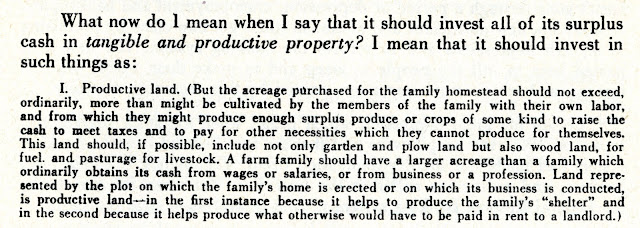Dateline: 30 April 2017
This blog post may be the most useful gardening revelation I have ever shared....
If you have read my garden writings for long you know that I became interested in no-till gardening last year, and that I started growing some cover crops in my garden. The picture above is an example of what I mean. The garden bed on the right has a cover crop of oats and the garden bed on the left has a cover crop of mustard. As you can tell by the leaves on the ground, that picture was taken in the fall.
I did not have time to get any cover crops into my Minibeds-on-Plastic experimental garden last year. But, as I explain in my Minibeds-on-Plastic Report, cover cropping and no-till gardening will be an integral part of my whole approach to minibed gardening. So, please keep that in mind as you read this post.
If I were to till a cover crop (like you see in the picture above) into the soil at some point, that cover crop would be a "green manure." But with no-till gardening I'm not interested in expending the effort to till the green manure into the soil.
Rather, my objective is to grow roots underneath the soil and leave them in place. While the plants are alive, the soil ecology interacts with the roots, resulting in a healthy, LIVE soil. When the plants die, the roots in the soil die also and feed the ecology, while the biomass above can be utilized as a mulch, which protects the soil—again promoting life and biological activity in the soil.
Now, the other thing that a cover crop as I've just described it does, and the thing I want to emphasize here, is that it GREATLY improves soil tilth. It makes the soil more "mellow," which is to say, it is more easily worked. And when garden soil is easy to work, especially at planting time in the spring, it is a real joy.
This delightful reality was my recent experience in that oat-seeded bed you see in the picture at the top of this page. Here's a picture of that same bed during a thaw this past winter...
And here is a picture of the oat bed as it looked this spring...
If you look close, you can see some full-size leaves that were captured by the stand of oats in the fall. And I should mention that, as the oats were getting started, I sprinkled some shredded leaves between the rows. So the bed had the benefit of growing oats, along with some leaf mulch.
This next picture shows me digging a furrow into the same bed to plant some onion sets earlier this spring...
What you are seeing in that picture is a soil that is incredibly mellow and easy to dig in. In this case, a picture really doesn't tell the story like I wish it could. Suffice it to say that I have never had a spring-planting soil that was so easy to work in. I simply parted the oat-and-leaf cover and used my Whizbang pocket cultivator to fork a planting furrow under the string line. NEVER have I planted a bed of onions in the spring so easily.
The soil tilth is far, far better than if I had just put a leaf mulch over it for the winter. I think there is a synergistic soil tilth result that comes with this sort of cover-cropping and no till gardening.
Here, for comparison, is another bed in my garden that had no cover crop, no mulch, and not even an occultation cover. This picture was taken on the same day as the picture above...
That barren bed is hard from exposure to rain and snow for the past few months. It needs some rain to get the pretty-much-lifeless soil into shape so the bed can be cultivated for planting. It will require a lot of WORK on my part, as compared to the bed with the oat cover crop.
The lesson here is clear and powerfully compelling. Cover cropping improves and maintains soil structure. It allows for very easy, no till gardening. I am persuaded more than ever that a system of simple cover cropping, along with no till gardening, in manageable minibed "islands", surrounded by an ocean of black plastic mulch, will make for a very successful Minibeds-on-Plastic gardening system.
But the proof will come with my Minibeds-on-Plastic experimental garden as I commence to plant and tend the beds this first year of the experiment. Stay tuned for that.
Before I end this post, here's a picture of my garden taken a couple days ago. It is actually a picture of one of my elderberry bushes that I have bush-planted, as explained (for raspberries) in my Planet Whizbang Idea Book For Gardeners. There are strings tied from each elderberry cane to the post.
The onion bed I wrote about above is visible in the background. I have planted three other beds (including that one with the hard, dead soil) to spring cover crops. One to oats. One to rye. And one to mustard. I am experimenting with each cover crop. I can cut them down and plant into the bed at any time.
Also, you can see some minibeds with Solar Pyramids in the background of the picture (some of the minibeds on the right have not been positioned and staked in place yet).
 |
| (click on any of the pictures to see larger views) |


















































